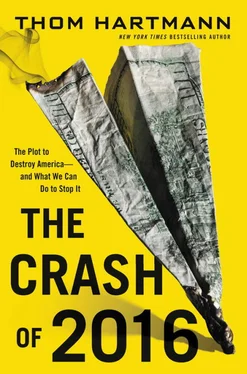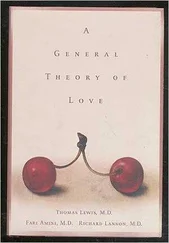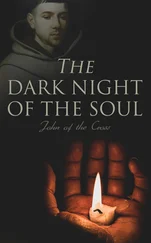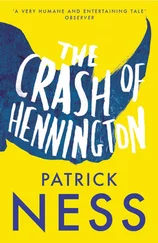He explained that capitalism demands a banking system and that that banking system is wired to misbehave, since there’s always an “inherent temptation” to create and sell as much debt as possible—whether it’s in the form of oil derivatives, mortgages, or student loans.
“They will always want to lend more money… the banking sector profits by creating debt,” Keen said.
If the banking sector simply lent money to businesses to fund productive investments and homeowners who could actually afford a home, then, Keen estimates, bank profits would be only 5 to 10 percent of total profits in America.
But with manufacturing decimated from so-called free trade, and no rules on Wall Street, Royalist banksters lunged for a bigger piece of the profit pie. They force-fed the nation more and more debt.
The peak level of debt financing was less than 10 percent of GDP in the 1920s, before the last Great Crash. But between 2000 and 2008, it was 20 percent of GDP—it was a far bigger bubble.
During this time, Wall Street profits as a share of total profits in America were upward of 50 percent. As Keen told me, “That’s not a sign of a healthy economy. That’s a sick economy.”
Another debt bubble, even bigger than the one in the 1920s, was being inflated. Keen told me the bubble had started in 1982.
I asked him why, and he said, “You had such a terrifying experience after the Great Depression and the Second World War. You completely tamed that bad behavior in the financial sector and people’s willingness to take on debt.”
But then people forgot. As Keen said, “If you look at when people started to really take on debt again, it was when the first baby boomer turned eighteen. We lost that memory, and then that same irresponsible behavior that gave us the Roaring Twenties came back.”
While my father’s generation remembered the Great Depression, I was born in 1951 and have no personal recollection of it. As my “boomer” generation took the reins of business in the seventies and eighties, there was no “remembered” sense of the dangers of reckless banking practices or even of reckless personal debt.
And so, in October 2006, history repeated itself when the second Great American Housing Bubble started to burst. It was worse than 1929.
Savvy investors saw the fuse burning. They knew that the housing-fueled Bush Bubble inflated by the Royalists’ assault on financial regulations and Alan Greenspan’s dangerously misdirected stewardship of the market, much like the dot-com-fueled Clinton Bubble, had come to an end and that soon it would move from little-noticed Fed figures into their own backyards—into the guts of Wall Street. The business press subtly informed investors, and giant hedge funds in New York and London began to position themselves for the coming market collapse.
The Financial Times , for example, in a September 27, 2006, article titled “Hedge Funds Hone In on Housing,” 106cited that “growing numbers of hedge funds have placed bets on a slump in the US housing sector in recent weeks.” The article noted that the funds were rapidly buying insurance against a housing crash in order to “be on the winning side of a housing downturn.”
But those insurance bets only made the problem worse. They just shifted ground zero of the now-larger derivative bomb from megabank corporations like Goldman Sachs to mega-insurance corporations like AIG. Both were “Too Big to Fail,” both were drenched in systemic risk, and both were capable of ending the United States as we know it.
We know what happened next—a serious financial panic.
Fittingly, three years after that panic, a June 2011 article in the Financial Times titled “Alfred Hitchcock’s ‘The Bankers’” noted, “The characteristics that make for good traders and investment bankers are pretty much the same as those that define psychopaths.” 107
The article goes on to ask about the increasingly vital-to-our-economy psychotic bankers. “Surely only someone with a serious personality disorder could have thought it was a good idea to sell a highly risky financial instrument like a CDO-squared to a naive investor who clearly did not understand the risk?” 108
As a result of these psychopaths, the markets tanked, banks across the country failed (the big ones got bailed out), and millions lost their homes and jobs.
But with the crash of 2007–08, the Royalists were just warming up. Their harvesting of the United States wouldn’t be complete until a few years later.
PART 3
“Oppression, Rebellion, Reformation”
CHAPTER 7
A Revolution Denied
You never let a serious crisis go to waste. And what I mean by that is it’s an opportunity to do things you think you could not do before.
—Rahm Emanuel, chief of staff to President Barack Obama, 2008
The beginning of the end of the Crash of 2016 begins on a cold January night in 2009—where this book begins—with the inauguration of Barack Obama.
In fact, the crash was plotted in a dining room a block off of Pennsylvania Avenue about halfway between the White House and the US Capitol. The Caucus Room, as it’s known, is across the street from the J. Edgar Hoover Building, headquarters of the FBI, right around the corner from Ford’s Theatre, where a president was killed during a time of national crisis, and two blocks north of the National Mall, which was “occupied” by the Bonus Army, during another time of national crisis, in 1931. It’s in the back end of the apartment building where Louise and I resided during the first year we lived in Washington, DC.
It was there, on the night of Inauguration Day in 2009, beneath soft track lighting and surrounded by polished cherrywood paneling, that a plot was hatched to make sure the Economic Royalists took advantage of the economic crisis, which they had caused. The stakes couldn’t be higher for them.
America was on the verge of a second New Deal. Or, a second Gilded Age. She was in the middle of a revolution.
In fact, Thomas Jefferson had predicted this revolution, and he also predicted what might happen to this nation if those Royalists in the Caucus Room won the revolution.
Jefferson’s Cycle of Revolutions
Running alongside the eighty-year cycle of Great Crashes, there’s another cycle, one of revolutions.
Because he had lived through a true revolution here, and had watched another one sputter and fail in France, Thomas Jefferson knew that periodic revolutions were necessary for America—or any democratic society—to flourish and grow.
Jefferson even suggested that “every generation” should have its own smaller form of revolution, reconfiguring the nation and its government to adapt to changing needs and changing times.
The concept of generations has played a role in many governing documents. The Iroquois Confederation’s “Great Law,” which was a major inspiration for the American Constitution, famously called for all governmental decisions to be made in the context of their impact on “the Seventh Generation” down the line into the future.
While the definition of the time period represented by a “generation” has been the subject of much speculation over the years, Thomas Jefferson recognized two clear definitions, and repeatedly said that both the Constitution and future legislators should respect each of them.
The first was the personal, familial definition of “generation”—which Jefferson put at nineteen years and today is generally considered to be around twenty years. In that context, with the first American Revolution officially beginning in 1776, today’s young people are about the twelfth generation since our nation’s birth.
Читать дальше












